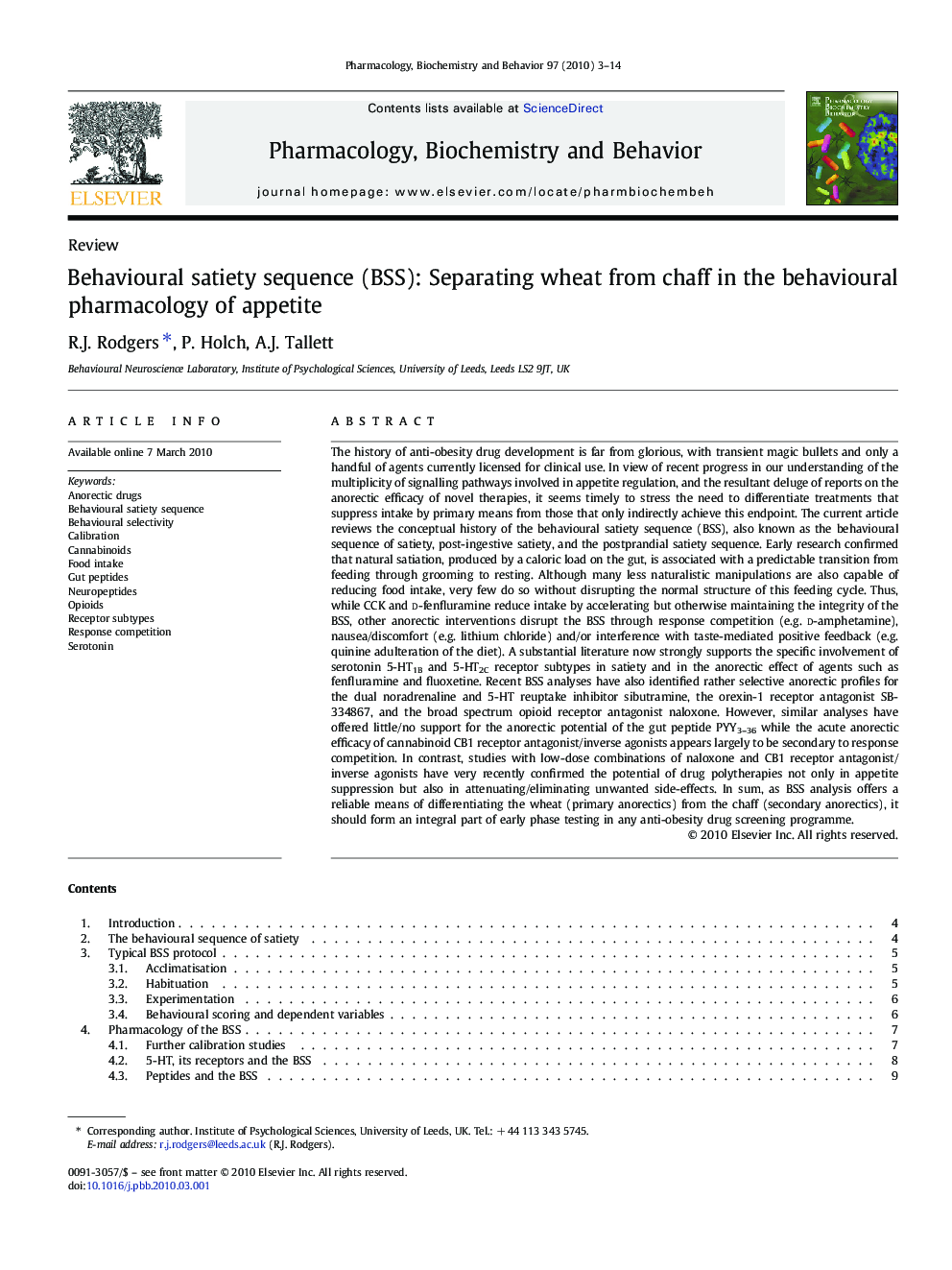| کد مقاله | کد نشریه | سال انتشار | مقاله انگلیسی | نسخه تمام متن |
|---|---|---|---|---|
| 2013242 | 1067102 | 2010 | 12 صفحه PDF | دانلود رایگان |

The history of anti-obesity drug development is far from glorious, with transient magic bullets and only a handful of agents currently licensed for clinical use. In view of recent progress in our understanding of the multiplicity of signalling pathways involved in appetite regulation, and the resultant deluge of reports on the anorectic efficacy of novel therapies, it seems timely to stress the need to differentiate treatments that suppress intake by primary means from those that only indirectly achieve this endpoint. The current article reviews the conceptual history of the behavioural satiety sequence (BSS), also known as the behavioural sequence of satiety, post-ingestive satiety, and the postprandial satiety sequence. Early research confirmed that natural satiation, produced by a caloric load on the gut, is associated with a predictable transition from feeding through grooming to resting. Although many less naturalistic manipulations are also capable of reducing food intake, very few do so without disrupting the normal structure of this feeding cycle. Thus, while CCK and d-fenfluramine reduce intake by accelerating but otherwise maintaining the integrity of the BSS, other anorectic interventions disrupt the BSS through response competition (e.g. d-amphetamine), nausea/discomfort (e.g. lithium chloride) and/or interference with taste-mediated positive feedback (e.g. quinine adulteration of the diet). A substantial literature now strongly supports the specific involvement of serotonin 5-HT1B and 5-HT2C receptor subtypes in satiety and in the anorectic effect of agents such as fenfluramine and fluoxetine. Recent BSS analyses have also identified rather selective anorectic profiles for the dual noradrenaline and 5-HT reuptake inhibitor sibutramine, the orexin-1 receptor antagonist SB-334867, and the broad spectrum opioid receptor antagonist naloxone. However, similar analyses have offered little/no support for the anorectic potential of the gut peptide PYY3–36 while the acute anorectic efficacy of cannabinoid CB1 receptor antagonist/inverse agonists appears largely to be secondary to response competition. In contrast, studies with low-dose combinations of naloxone and CB1 receptor antagonist/inverse agonists have very recently confirmed the potential of drug polytherapies not only in appetite suppression but also in attenuating/eliminating unwanted side-effects. In sum, as BSS analysis offers a reliable means of differentiating the wheat (primary anorectics) from the chaff (secondary anorectics), it should form an integral part of early phase testing in any anti-obesity drug screening programme.
Journal: Pharmacology Biochemistry and Behavior - Volume 97, Issue 1, November 2010, Pages 3–14